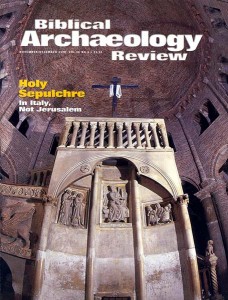First Person: Ushering In the Future at the Shrine of the Book
Roitman seeks funding for exciting ideas

It is the most distinctive building in modern Israel. It is also one of the most visited—a destination for virtually everyone who travels to the Holy Land. It is the Shrine of the Book, home of the Dead Sea Scrolls.
But it needs work—and money.
Dedicated on April 20, 1965, after eight years of planning and construction, the shrine was built to house the seven original Dead Sea Scrolls found by the Bedouin in 1947. Three of these scrolls were purchased for the new State of Israel by Professor Eleazar Sukenik of Hebrew University; the other four were secured by his son Yigael Yadin. To this original collection, an additional manuscript has now been added—the Dead Sea Scroll known as the Temple Scroll, which Yadin obtained after the 1967 Six-Day War. The Shrine of the Book also houses the oldest copy of the Hebrew Bible (the Aleppo Codex)a and other related manuscripts and artifacts.
Designed by the American architect Armand Bartos and his colleague Frederick Kiesler, the building has been called “a milestone in the history of world architecture.”1
Already a library member? Log in here.
Institution user? Log in with your IP address.

